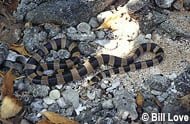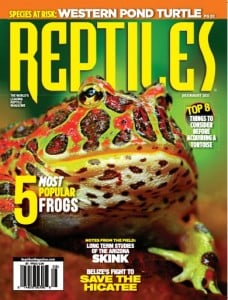Yellow-lipped Sea Krait
This species has an exceptionally wide range, being found from the Bay of Bengal over the Indonesian and Southeast Asian area to the Solomons and other islands of the South Pacific, with a few records from northern Australia, southern Japan, and even Central America.
Few zoos or individuals have had much success keeping sea kraits for long, as they need large pools of warm salt water as well as rocks and other dry areas on which to bask. They are fairly adaptable, however, and some zoos have had moderate success using fresh water with just occasional baths in salt water. Water temperatures should be about 80 degrees Fahrenheit, with land temperatures between 80 and 90 degrees. Basking lights will be used by some individuals.
In nature the sea kraits feed almost exclusively on eels of different species, a diet hard to match in captivity. Some specimens adapt to taking other types of elongated fish, but feeding is almost always a major problem. Attempts to switch sea kraits to rodents generally fail.
Though potentially dangerously venomous, this species has a reputation for being docile, easily handled and producing very little venom. Bites are almost unknown, but this doesnât mean the species should be underestimated or handled casually.

